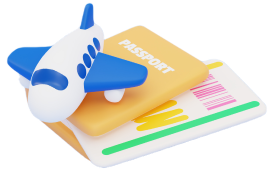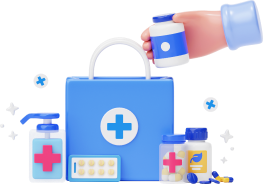Healthcare in Japan

Lais Cattassini
Lais is a Brazilian journalist and copywriter with over 17 years of experience, writing about things she knows really well (travelling, cinema, social media trends) and things she loves learning about.

Oleksandra Dosii
Oleksandra is a dedicated marketer with a passion for growing HR-tech products. She believes content marketing is about delivering high-quality content that provides value—not just generating leads. Since 2016, Oleksandra has been involved in tech talent relocation.

Start Advertising

Interesting facts:
- Despite providing universal coverage, Japan has relatively low healthcare costs.
- Japan consistently ranks among the highest in the world for life expectancy, often attributed to its healthcare system's focus on preventive care.
- The Japanese government strictly regulates the cost of healthcare services, including medications, through a biennial review system.
Overview of the Japanese healthcare system
All residents of Japan are required to have health insurance. This can be through employer-based insurance, National Health Insurance (NHI) for people who are self-employed, unemployed, or retirees, or coverage, an insurance that covers 70% of medical costs, with patients typically responsible for 30%. Lower-income individuals, children, and the elderly receive additional subsidies to reduce out-of-pocket expenses.
The Japanese government regulates healthcare heavily to maintain affordability. It sets standard prices for all medical procedures and services through the Fee Schedule, which applies to both public and private hospitals. Every two years, the government reviews and adjusts the prices.
Healthcare providers in Japan include both public and private hospitals and clinics. Most hospitals are privately owned but are non-profit by law. Patients are free to choose any doctor or hospital without needing referrals, and healthcare facilities are generally accessible across the country.
Despite having a universal system, Japan's healthcare costs are relatively low compared to other developed countries. Out-of-pocket spending is controlled by the government, and catastrophic health expenses are capped for individuals, ensuring financial protection.
How to access the healthcare system in Japan as an expat
Whether you're an employee, self-employed, or a student, all residents are required to have health insurance. Expats typically enrol in one of two systems: employer-based insurance or National Health Insurance (NHI).
Residency
Before registering for healthcare, expats must have a Resident Card (在留カード, Zairyū kādo) and be officially registered as a resident in Japan, which is mandatory if you're staying for more than 90 days. You'll need to complete this at your local municipal office within 14 days of arriving in Japan.
Employer-Based Health Insurance (社会保険, Shakai Hoken)
This type of insurance applies to everyone working full-time for a company in Japan. Your company is legally obligated to enrol you in Shakai Hoken and will deduct insurance premiums from your salary, covering both healthcare and pension contributions.
Premiums are split between you and your employer, generally 50/50. The cost depends on your salary but averages around 10% of your earnings.
Coverage includes healthcare services and additional benefits such as sick leave and maternity leave.
National Health Insurance (国民健康保険, Kokumin Kenkō Hoken)
NHI is for people who are self-employed, students, freelancers, or unemployed. If that is your case, you'll need to enrol in the National Health Insurance at your local municipal office (市役所, Shiyakusho).
After obtaining your Resident Card and completing your address registration, go to the municipal office where you live to register for National Health Insurance. Fill out the registration form and submit it along with your documents at the municipal office. The staff will calculate your monthly premium based on your income.
After applying, you'll receive your National Health Insurance card either on the spot or by mail, usually within a few days. You can use your insurance card at any clinic or hospital to cover 70% of medical costs.
It's important to register as soon as possible because the system requires you to be enrolled retroactively from the date of your residence registration. If you delay, you may be charged premiums for the months you were unregistered.
Both Shakai Hoken and National Health Insurance can cover dependents (spouse and children). If you have a family, they should also be enrolled, either through your work insurance or NHI.
Types of health insurance in Japan
Employer-Based Health Insurance (社会保険, Shakai Hoken)
This insurance is for salaried workers employed by medium to large companies. It covers both healthcare and pension benefits.
Full-time employees working at companies of a certain size (usually those with 5 or more employees) are automatically enrolled in Shakai Hoken. The premium is calculated based on the employee's monthly salary and is shared between the employee and the employer. Typically, both parties contribute around 50% each.
It covers 70% of medical costs, with the remaining 30% paid by the patient. The employee's dependents (spouse, children, etc.) can be covered under this insurance at no extra cost.
National Health Insurance (国民健康保険, Kokumin Kenkō Hoken)
Anyone not enrolled in employer-based insurance is required to join the National Health Insurance program.
Premiums are based on the individual's annual income from the previous year and vary depending on the municipality. Low-income individuals may receive discounts or subsidies to lower their premiums.
Coverage is similar to Shakai Hoken; NHI covers 70% of medical costs, with patients paying the remaining 30%.
Individuals must enrol at their local municipal office within 14 days of registering as a resident in Japan. Premiums are typically paid monthly. Dependents must be registered separately, and their premiums are calculated individually.
Mutual Aid Association Insurance (共済組合, Kyosai Kumiai)
This is a form of employer-based insurance specifically designed for public sector workers, such as government employees, teachers, and civil servants.
Premiums are deducted from the employee's salary, with the government (or public institution) contributing a portion.
Kyosai Kumiai offers slightly better benefits than Shakai Hoken, with additional perks such as more comprehensive health checkups, coverage for extended family members, and welfare programs.
Employees' family members can be covered under this insurance as well.
Private Health Insurance
Private health insurance is an additional insurance option that can be used to complement Japan's public insurance system. It is not a replacement for public insurance, but many residents opt for it to cover areas that the public system does not fully address.
Some of the most common Japanese health insurance companies include Nissay, Sompo, Dai-ichi Life, AIG, and MS&AD.
Long-Term Care Insurance (介護保険, Kaigo Hoken)
All residents aged 40 and older are required to pay into the Long-Term Care Insurance system. Those aged 65 and over can access benefits if they need long-term care services. Contributions to this insurance are included in health insurance premiums for those 40 years and older.
It provides access to nursing homes, home care services, rehabilitation services, and other forms of long-term care. The system is designed to help alleviate the burden on families providing care for elderly or disabled members.
How much does health insurance in Japan cost?
The premium for Shakai Hoken (employer-based health insurance) is shared between the employee and the employer, typically split 50/50. It is based on a percentage of the employee's monthly salary, ranging from 7% to 10%, depending on the prefecture and employer. Dependents (spouse, children) are usually covered at no additional cost under Shakai Hoken.
The cost of Kokumin Kenkō Hoken (national health insurance) depends on your income from the previous year and is calculated by local municipal offices. It is also affected by the number of dependents, your place of residence, and other factors. For someone with a low annual income, like someone earning around ¥2,000,000 (approximately €12,300) per year, the premium might be ¥10,000 to ¥15,000 (€60-€90) per month.
Basic plans for private health insurance may cost ¥3,000 to ¥5,000 (€18-€30) per month, while more comprehensive plans could range from ¥10,000 to ¥20,000 (€60-€120) per month.
In addition to premiums, Japan has a cap on out-of-pocket medical expenses. For individuals with high medical costs in any given month, the government provides catastrophic coverage, limiting the total amount you pay for healthcare. For average-income individuals, the monthly cap on out-of-pocket expenses is around ¥80,000 (approximately €490), though this can vary slightly based on income.
Expat health insurance in Japan
Expats living in Japan are required by law to have health insurance, just like Japanese citizens. If you are employed full-time by a company in Japan, your employer is legally required to enrol you in Shakai Hoken (employer-based health insurance). If you are self-employed, a freelancer, a student, or unemployed, you are required to enrol in Kokumin Kenkō Hoken (national health insurance).
If you don't enrol in one of these options in time, when you eventually register, you will be required to pay premiums retroactively from the date of your residency registration, meaning you could owe for previous months if you delayed enrollment.
Without health insurance, you will not benefit from subsidised medical services, where insurance typically covers 70% of the cost. You would have to pay the full amount for any healthcare services.
English-speaking doctors in Japan
In larger cities like Tokyo, Osaka, Yokohama, and Kyoto, there are more options for English-speaking doctors and international clinics. Many hospitals and larger clinics in these cities have staff who speak English, and some even cater specifically to the expat community.
Tokyo Medical and Surgical Clinic, Roppongi Hills Clinic, and Osaka Medical Clinic are specifically designed for expats and offer services in English.
JNTO offers a list of hospitals and clinics that provide services in English and other languages. The site also provides information on how to handle medical emergencies.
Japan Healthcare Info (JHI) is a popular resource for finding English-speaking doctors, clinics, and hospitals. Their website allows you to search for healthcare professionals by city or region. They also offer telephone interpretation services for doctor visits.
What to do in an emergency?
If you or someone else experiences a medical emergency, call 119 for an ambulance (same number for the fire department). Ambulances in Japan are free of charge, but hospital fees apply.
If you are in a medical situation and need translation services, you can call the Japan Helpline at 0120-461-997 for emergency interpretation.
You can also go directly to a hospital that has an emergency department (kyūmeibyōin, 救命病院) if possible.
For crime-related emergencies, call 110 for the police.
Need expat health insurance?

Fill out this form

Shoot us an email with your inquiry at [email protected].




















